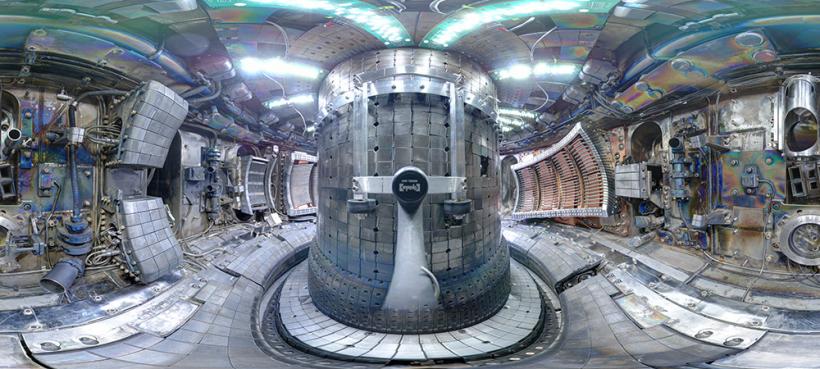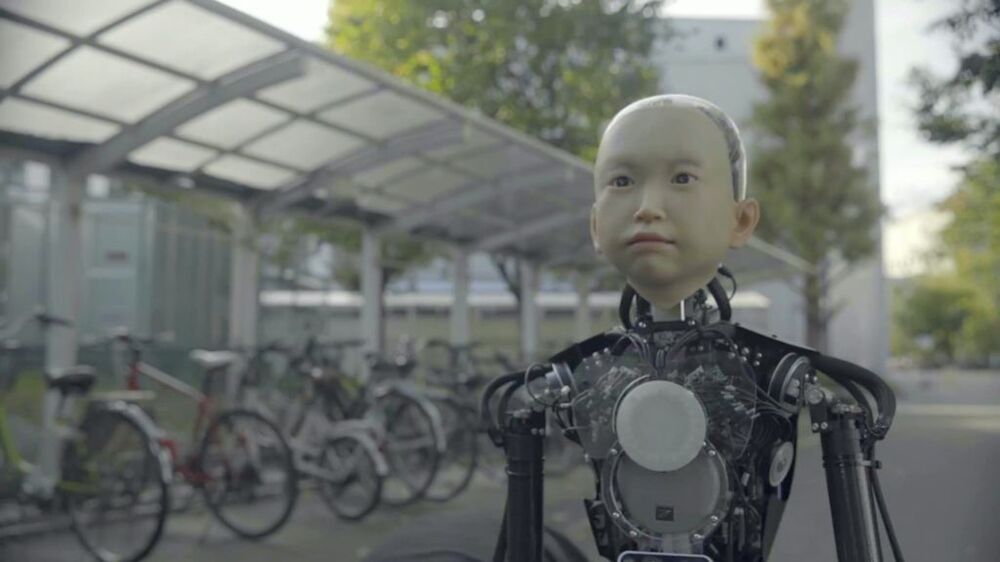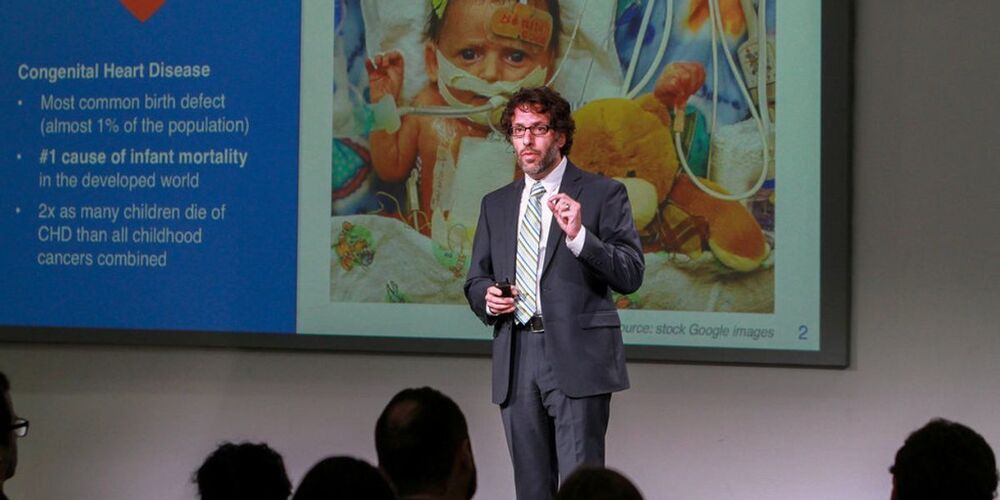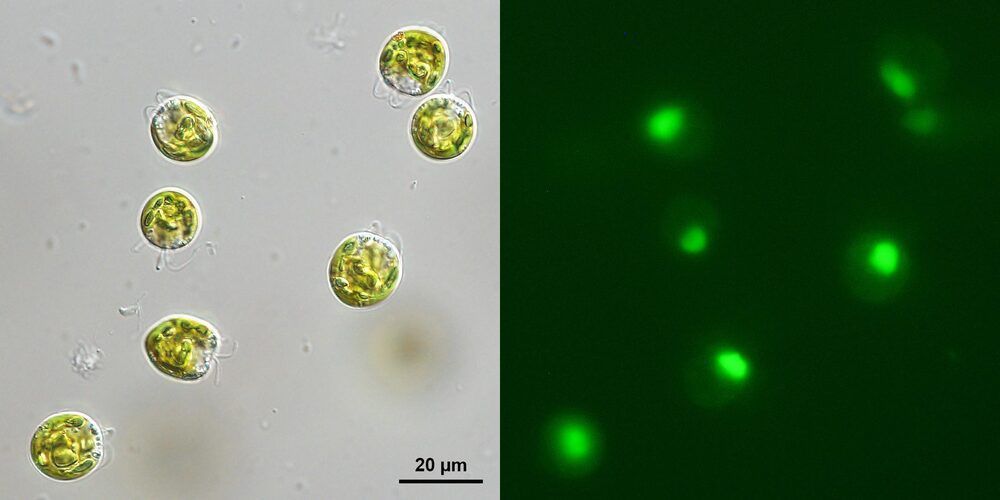Basically, we live in one giant algorithm.
In fascinating new research, cosmologists explain the history of the universe as one of self-teaching, autodidactic algorithms.


Composite membrane origami has been an efficient and effective method for constructing transformable mechanisms while considerably simplifying their design, fabrication, and assembly; however, its limited load-bearing capability has restricted its application potential. With respect to wheel design, membrane origami offers unique benefits compared with its conventional counterparts, such as simple fabrication, high weight-to-payload ratio, and large shape variation, enabling softness and flexibility in a kinematic mechanism that neutralizes joint distortion and absorbs shocks from the ground. Here, we report a transformable wheel based on membrane origami capable of bearing more than a 10-kilonewton load. To achieve a high payload, we adopt a thick membrane as an essential element and introduce a wireframe design rule for thick membrane accommodation. An increase in the thickness can cause a geometric conflict for the facet and the membrane, but the excessive strain energy accumulation is unique to the thickness increase of the membrane. Thus, the design rules for accommodating membrane thickness aim to address both geometric and physical characteristics, and these rules are applied to basic origami patterns to obtain the desired wheel shapes and transformation. The capability of the resulting wheel applied to a passenger vehicle and validated through a field test. Our study shows that membrane origami can be used for high-payload applications.
Origami has been a rich source of inspiration for art, education, and mathematics, and it has proven to be an efficient and effective method for realizing transformable structures in nature (1–3) and artificial systems (4–8). Composite membrane origami, the design technique based on the laminar composition of flexible membranes with rigid facet constraints, opens a new field for robotics by the transition from component assembly to lamination, which considerably simplifies design, fabrication, and assembly. This transition simplifies and speeds up fabrication and enables reaching size scales that were difficult to access before (9, 10). In addition, membrane origami provides a versatile shape-changing ability that has been exploited in various applications (11–15), and its applicability has been extended by additional design dimensions obtained from material characteristics such as softness and stretchability (16–19).
Beyond the aforementioned benefits, origami has been an effective design tool for constructing a high payload-to-weight structure, such as a honeycomb panel, by markedly increasing the buckling strength using unique geometric configurations (20, 21). Combining this feature with reconfigurability, various stiffness transition mechanisms have also been introduced (22–24). The rigidity of components is another important factor to secure high load capacity and closely related to the thickness. Origami design is, traditionally, a matter of organizing fold lines under fundamental and ideal assumptions—zero facet thickness and zero fold line width (25–27). However, in response to growing interest in origami-inspired applications that require load-bearing capability, various thickness accommodation methods have been introduced (28–30).

Making Kazakhstan Green Again — Mr. Arman Kashkinbekov, Honorary CEO and Board Member, Association of Renewable Energy of Kazakhstan — Director, International Snow Leopard Foundation.
Mr. Arman Kashkinbekov, is the honorary CEO and board member, Association of Renewable Energy of Kazakhstan and Deputy Chairman of the Board, International Centre for Green Technologies and Investment Projects (Kazakhstan).
With a bachelor’s degree from Karaganda University, in International Economic Relations, and a master’s degree in economics from Vanderbilt University, Mr. Kashkinbekov also studied at the Norwegian Petroleum Directorate and the Kazakhstan-Japan Development Center.
Mr. Kashkinbekov has broad experience in the oil & gas and mining industries, including roles as senior manager at NC KazMunayGas, deputy country manager at ConocoPhillips, executive director at KazEnergy, general manager at Rolls-Royce Energy, and deputy CEO at ArcelorMittal Temirtau.
Mr. Kashkinbekov also worked as president of KazInvest, head of international affairs at the Sovereign Wealth Fund, Samruk-Kazyna, adviser to chairman of the board at NC KazAutoZhol, and director of the foreign Investor’s Council chaired by the President of Kazakhstan.

The film features Nick Bostrom, author of Superintelligence; Japanese roboticist, Hiroshi Ishiguro; Douglas Rushkoff, author of Team Human; Ben Goertzel, founder of Singularity.net; and Deepak Chopra, who is creating his own A.I. mind twin.
EXCLUSIVE: Here’s the first trailer for Hot Docs opener Artificial Immortality by filmmaker Ann Shin.
The documentary explores the latest advancements in AI, robotics and biotech with visionaries who argue for a new age of post-biological life. It poses the questions: if you were able to create an immortal version of yourself, would you?; and will AI be the best, or the last thing we ever do as a species?

A $2 million federal grant will enable Houston-based PolyVascular to launch human trials of what it hails as the first polymer-based heart valve for children.
In conjunction with the grant, Dr. Will Clifton has joined the medical device company as chief operating officer. He will oversee the grant as principal investigator, and will manage the company’s operations and R&D. Clifton is president and co-founder of Houston-based Enventure, a medical innovation incubator and education hub. He previously was senior director of medical affairs at Houston-based Procyrion, a clinical-stage medical device company.
PolyVascular’s Phase II grant came from the Small Business Innovation Research (SBIR) program, which promotes technological projects.

New study points to potential widespread phagocytosis among green algae, suggests improved methodology in environmental microbiology.
New research suggests that the ability of green algae to eat bacteria is likely much more widespread than previously thought, a finding that could be crucial to environmental and climate science. The work, led by scientists at the American Museum of Natural History, Columbia University, and the University of Arizona, found that five strains of single-celled green algae consume bacteria when they are “hungry,” and only when those bacteria are alive. The study is published today in The ISME Journal.
“Traditionally, we think of green algae as being purely photosynthetic organisms, producing their food by soaking in sunlight,” said Eunsoo Kim, an associate curator at the American Museum of Natural History and one of the study’s corresponding authors. “But we’ve come to understand that there are potentially a number of species of green algae that also can eat bacteria when the conditions are right. And we’ve also found out just how finicky they are as eaters.”

Brown University is facing a cyberattack that has forced the school to shut some systems down — in an event that Brown is calling an “utmost priority.”
Jack Wrenn, a fifth-year doctoral candidate, said that official information was still “frustratingly scant” as of Wednesday night.
Wrenn provided a timeline as to what he understood transpired, and when the university community was notified.

An interview with Dr. Yulia Turchaninova on What would be your take on that?
Many parents employ a “job” metaphor for school. But as a parent, do you bring your work home every night? Do it over the weekend? Take it with you on vacation? And if you do, are you still eager to work on it when the whole family sits down to chat, play and watch TV after dinner? And how many direct bosses do you have above you? How about six to eight different ones a day, each with their own quirks? Do they replace each other at the ring of the bell, demanding that you instantly and completely switch to the new assignment, regardless of whether you have completed the previous one, and do it in their idiosyncratic way? And if you do, is this the kind of life that you would wish for your children?
Brodsky: So, what would be a better way of treating our metaphors?
Turchaninova: Since metaphors shape our understanding of complex issues, it may be wise for parents and educators to reflect on the metaphors we use while talking about school. It would be great for us as a society to come up with a new set of metaphors that help us express the essence of the kind of education we want for our children in the upcoming century.

New data from Children’s National Hospital shows parental experience with a number of social determinants of health can ultimately impact brain development in utero, something researchers said should suggest future community health intervention among pregnant people. The data, published in JAMA Network Open, specifically found poorer brain development in fetuses among pregnant people with low socioeconomic status (SES), low educational attainment, and limited employment opportunity.
New data from Children’s National Hospital has found that social determinants of health like income, education, and occupation can impact fetal brain development, following that child into life.